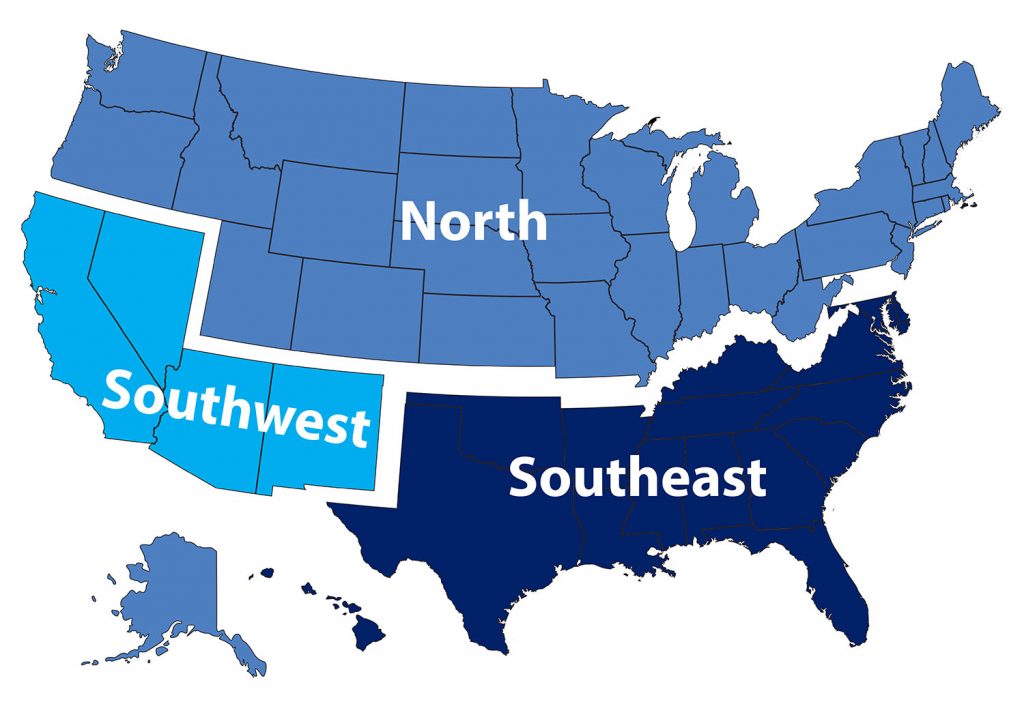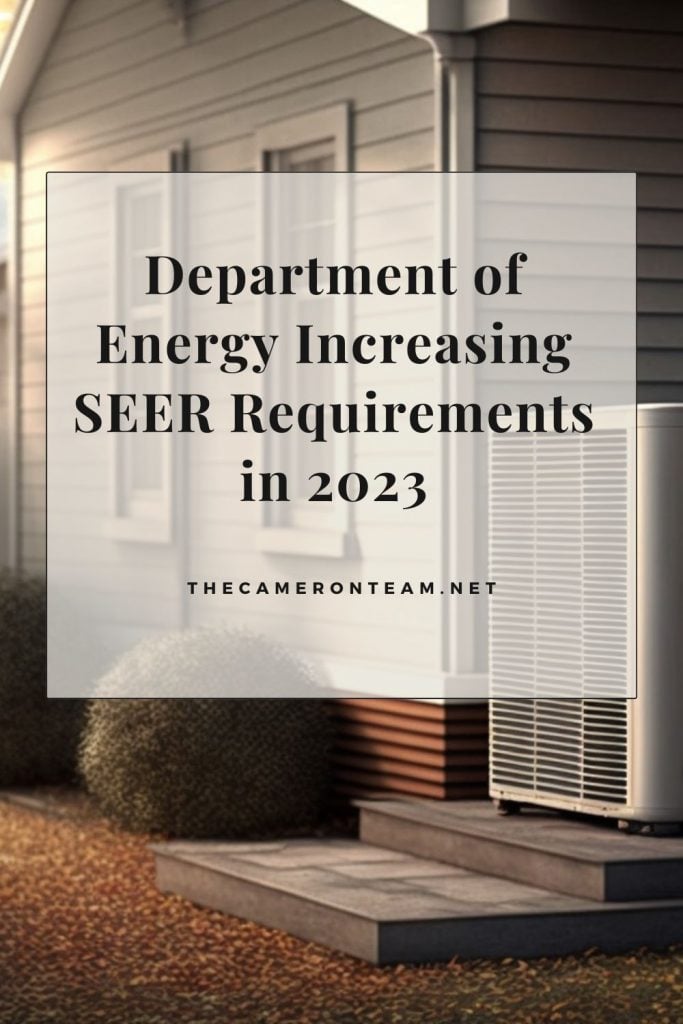The Department of Energy (DOE) has announced changes to the Seasonal Energy Efficiency Ratio (SEER) requirements for newly installed air conditioning units in 2023. SEER is the ratio of total cooling capacity during normal periods of operation (Btu) divided by the total electric energy input over that same period (watt-hours).
Homeowners will be pleased to know that the higher the SEER, the less electricity is required for the A/C unit to cool the space, which results in lower electricity bills. However, the DOE is moving away from using SEER as the standard and upgrading to SEER2, a testing standard developed in 2016 that better mimics the actual field conditions of a typical ducted system.
The 2023 system minimum standards for split A/Cs are dependent on the region the unit is located. The DOE divides the United States into 3 regions. Here are the minimum standards for each type of system in each region:
- Split A/Cs:
- Northern Region: 13.4 SEER2 or 14.0 SEER
- Southeastern Region: 14.3 SEER2 or 15 SEER
- Southwestern Region: 14.3 SEER2 or 15 SEER
- Split Heat Pumps:
- Northern Region: 14.3 SEER2 and 7.5 HSPF2
- Southeastern Region: 14.3 SEER2 and 7.5 HSPF2
- Southwestern Region: 14.3 SEER2 and 7.5 HSPF2
- Packaged A/Cs:
- Northern Region: 13.4 SEER2
- Southeastern Region: 13.4 SEER2
- Southwestern Region: 13.4 SEER2
- Packaged Heat Pumps:
- Northern Region: 13.4 SEER2 and 6.7 HSPF2
- Southeastern Region: 13.4 SEER2 and 6.7 HSPF2
- Southwestern Region: 13.4 SEER2 and 6.7 HSPF2
It is important to note that these updates do not affect homeowners with existing installed units. It mainly affects the purchase of new units and anyone who may have a unit in storage that has not been installed. If the unit does not meet current DOE requirements, local building officials may not issue a Certificate of Occupancy. Unfortunately, the DOE does not provide a period of transition and non-compliance can result in fines.
The History of the SEER Rating
The Seasonal Energy Efficiency Ratio (SEER) was first introduced in the 1970s by the Department of Energy (DOE) as a way to measure the energy efficiency of air conditioning units. They were the result of the Energy Policy and Conservation Act of 1975 (EPCA), which set testing standards for vehicles and appliances after the 1973 oil crisis and stock market crash. However, at this point, they were suggestions and not enforced.
Not until 1978, when the National Energy Policy and Conservation Act (NEPCA) was passed, did the DOE start trying to enforce home heating regulations, but the furthest they got was limiting the temperatures of office buildings and strongly recommending to homeowners that they do the same. Ronald Reagan greatly opposed these regulations and when he took office in 1981, the DOE was almost disbanded.
The first enforced minimum standards of central air conditioning systems, heat pumps and furnaces were set after the approval of The National Appliance Energy Conservation Act (NAECA) in 1987.
Initially, SEER ratings were not very high, and air conditioning units were not very efficient. In the 1990s, the DOE set the minimum SEER rating to 9.7 and 10 (depending on the type of unit), and then raised it to 13 in 2006. From 2006 to 2011, these standards remained basically the same, until the DOE decided it was time to take a regional approach. In 2015, the United States was split into 3 regions, each with their own standards.
In 2016, the DOE introduced a new testing standard called SEER2. SEER2 is designed to more accurately reflect the real-world energy consumption of air conditioning units. Its new M1 testing procedure increases the external static pressure by a factor of five, creating conditions closer to a system located in the field.
It’s 2023 and the DOE has updated the minimum SEER requirements for newly installed air conditioning units, based on the SEER2 testing standard. The goal is to encourage the use of even more energy-efficient air conditioning units and reduce energy consumption further.
If you’d like to read an even more detailed history of the United States’ energy conservation efforts and the Department of Energy, visit Adams Air.
Overall, the history of the DOE SEER rating reflects a growing awareness of the need to reduce energy consumption and promote energy efficiency. As technology continues to improve, it is likely that SEER ratings will continue to increase, leading to even more energy savings for homeowners and environmental benefits for the country. If you have any questions or concerns about these changes, make sure to contact your favorite heating and air professional for more information.





